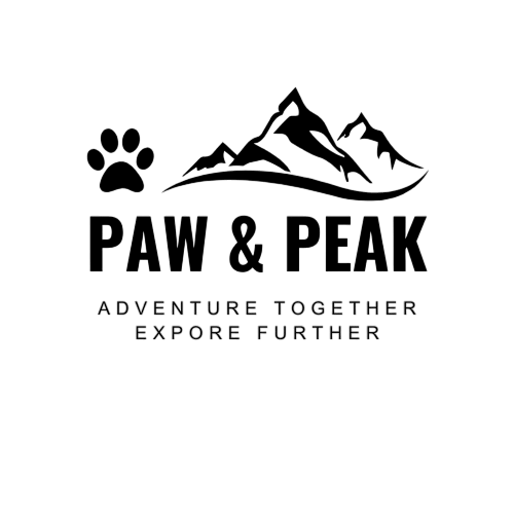Wildlife Encounters: Keeping Your Pet (and Wildlife) Safe


Products That Help Manage Wildlife Encounters
SpotOn Virtual Smart Fence Collar - GPS-enabled boundary training for emergency recal. https://amzn.to/4cfuFmD
PetSafe SprayShield Animal Deterrent Spray - Citronella-based deterrent for aggressive wildlife. https://amzn.to/4j9B84L
Nite Ize SpotLit LED Light - Attach to collar to increase visibility during dawn/dusk wildlife activity hours. https://amzn.to/4jhvePj
Ezydog Track'n'Train Long Line - 15-foot training lead for wildlife aversion training. https://amzn.to/43yTDet
Coyote Vest Pet Body Armor - Protective wear with spikes for small dogs in predator territory. https://amzn.to/3RttYws
The stillness of dawn shattered as a moose and her calf emerged from the forest edge just fifty yards ahead on our backcountry trail. With my lab mix Ranger tensing beside me, this moment—simultaneously magnificent and potentially dangerous—highlighted the complex reality of sharing wilderness with wildlife while accompanied by a domestic predator. Over years of backpacking and hiking through bear country, rattlesnake territory, and moose habitat with dogs, I've developed strategies for safely navigating wildlife encounters that protect both my pets and the wild animals whose home we're visiting. These encounters require more than reactive measures; they demand thoughtful preparation, species-specific knowledge, and consistent training long before paw meets trail.
Effective wildlife safety begins with understanding your local ecosystem and its inhabitants. Before adventuring in unfamiliar territory, I research the prevalent wildlife species, their seasonal patterns, and specific behaviors toward domestic dogs. This knowledge shapes everything from trail selection to time-of-day decisions—choosing trails away from known elk calving grounds in spring, for instance, or avoiding dawn hikes during seasons when bears actively feed near trails. Regional wildlife patterns also influence essential gear choices; in rattlesnake country, I never hike without snake gaiters for myself and avoidance training for Ranger, while bear country adventures always include deterrent spray accessible within one second regardless of what my hands are doing. Understanding that dogs can actually escalate wildlife encounters rather than deter them has fundamentally changed my approach—when backpacking through grizzly habitat, Ranger wears a bear bell not to warn bears away, but to prevent surprise encounters that trigger defensive responses.
Training specifically for wildlife encounters has become a non-negotiable element of our adventure preparation. Beyond basic obedience, Ranger has mastered an emergency recall that overrides all distractions and a rock-solid "leave it" command that applies to everything from dropped food to wildlife trails. We regularly practice "behind me" positioning that places him in the safest position during potential encounters, and silent hand signals that allow communication without vocalizations that might further stress wildlife. For rattlesnake territory, professional aversion training provided him with specific recognition and avoidance behaviors that vastly reduce strike risk. These specialized commands receive continuous reinforcement during every adventure, ensuring they remain instantly accessible during actual wildlife situations where hesitation or confusion could prove dangerous.
Different wildlife species necessitate species-specific response protocols, which I've developed through research and unfortunate experience. For larger ungulates like moose or elk, which may perceive dogs as predatory threats to calves, our protocol involves immediately shortening Ranger's leash, moving deliberately off-trail to create maximum distance, and using terrain features as visual barriers while maintaining awareness through sound cues. For potential predators like coyotes or mountain lions, our approach shifts completely—maintain eye contact, appear larger through raised arms and open jacket, speak firmly, and retreat slowly while facing the animal. Snake encounters call for immediate leash tension control to prevent lunging and careful scanning for additional snakes, as they rarely travel alone. These distinct protocols acknowledge the biological realities of different species rather than applying one-size-fits-all approaches that might escalate rather than defuse potentially dangerous situations.
Perhaps the most important wildlife safety practice involves recognizing that prevention dramatically outweighs response in effectiveness. I consistently select trails and camping areas that minimize wildlife interaction probability, particularly during sensitive seasons like mating or cub-rearing periods. Scent management—storing all pet food using the same bear-safe containers and procedures as human food—prevents habituation of wildlife to pet-associated smells. Ranger remains leashed in all wildlife-sensitive areas regardless of regulations, acknowledging that even the best-trained dogs retain predatory instincts that can trigger wildlife defensive responses or cause inadvertent stress to animals trying to conserve crucial energy. When selecting camping locations, I avoid game trails, water sources at dawn/dusk hours, and areas with abundant berry patches or other food sources that naturally attract wildlife. These preventative practices reflect a fundamental truth of wilderness travel with pets: the most successful wildlife encounter is the one that never happens, allowing wild animals to maintain their natural behaviors undisturbed while we enjoy their habitat with minimal impact.
Adventure Together. Explore Further. Paw and Peak.
Join Our Pack
Whether you're scaling peaks with your pup, camping with your cat, or simply enjoying local trails with your animal companion, you're part of our community. Follow our social channels for more information, share your own journey using #PawAndPeakAdventures.
The trail is calling—and this time, both you and your pet will be perfectly equipped for the journey.
Adventure Together. Explore Further. Paw and Peak.
Subscribe to Our Newsletter!
© 2025. All rights reserved.
